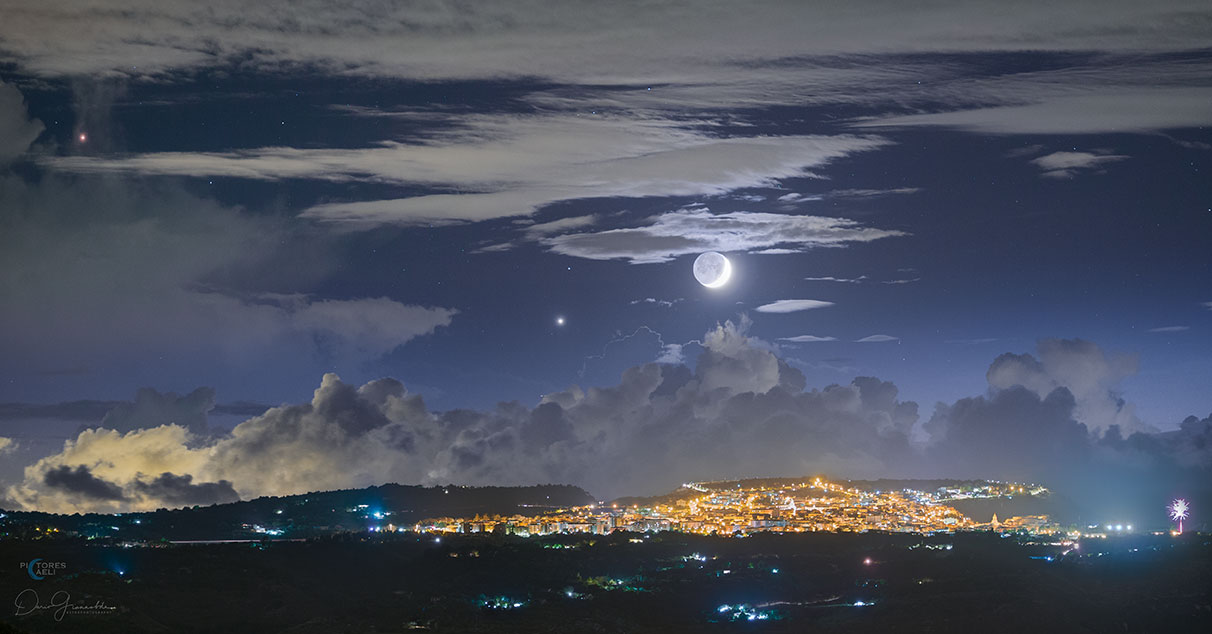西西里岛上的地球月亮
(原标题: Earthshine Moon over Sicily)
2021-10-18
浏览次数: 121
为什么我们能看到月球的整个面?当月亮处于新月阶段时,只有一部分会被太阳直接照亮。答案是地球光,也被称为地球光和达芬奇光。原因是月球面向地球的其余部分被首先从地球反射的阳光轻微照亮。由于地球从月球上看接近满月——当月球从地球上看为轻微的新月时——地球的光线就接近它最亮的时候。这是本月早些时候连续拍摄的组合HDR图像,一个冉冉升起的地球月亮被捕捉到在金星附近缓慢经过,金星是图像中心附近最亮的点。金星的上方是天蝎座三角星(Dschubba),而最左边的红色恒星是心宿二。透过风景秀丽的云层可以看到天象。前景是来自Palazzolo Acreide的灯光,Palazzolo Acreide是意大利西西里岛的一座历史悠久的城市。
查看原文解释
Why can we see the entire face of this Moon? When the Moon is in a crescent phase, only part of it appears directly illuminated by the Sun. The answer is earthshine, also known as earthlight and the da Vinci glow. The reason is that the rest of the Earth-facing Moon is slightly illuminated by sunlight first reflected from the Earth. Since the Earth appears near full phase from the Moon -- when the Moon appears as a slight crescent from the Earth -- earthshine is then near its brightest. Featured here in combined, consecutively-taken, HDR images taken earlier this month, a rising earthshine Moon was captured passing slowly near the planet Venus, the brightest spot near the image center. Just above Venus is the star Dschubba (catalogued as Delta Scorpii), while the red star on the far left is Antares. The celestial show is visible through scenic cloud decks. In the foreground are the lights from Palazzolo Acreide, a city with ancient historical roots in Sicily, Italy.
© Dario Giannobile
